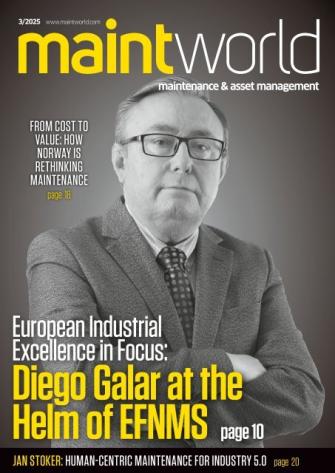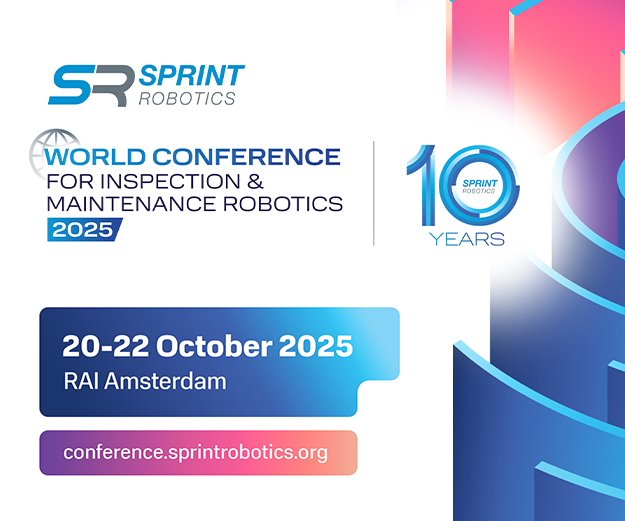Value Driven Maintenance® Discover the Hidden Value in Your Organization
“What exactly is the added value of maintenance?” is a frequently heard question in boardrooms all over the world. Even though maintenance is often critically important, only few maintenance managers are able to answer the question convincingly. This is especially the case when they are asked to express the benefits in terms of economic value added or shareholder value – a language increasingly being spoken in boardrooms all over the world.
Mark Haarman and Guy Delahay have developed the Value Driven Maintenance® (VDM) methodology which builds a bridge between the traditional maintenance philosophies and managing by economic added value. Not only does VDM simplify the boardroom discussion, it also shows that far from being a cost centre, maintenance can create significant economic value improving the overall business performance.
What is Value?
Before you can manage by economic added value, you have to understand what value is exactly. Reference to financial literature reveals that value is defined as the sum of all future free cash flows, discounted to today.
This sounds impressive, but what does it exactly mean? Let’s start by looking at the first part of the definition. A cash flow is the difference between income and expenditure; this is not the same as the difference between revenues and costs because that is an item that can be greatly influenced by accounting practices. Some companies use highly creative lease, depreciation and reservation techniques to keep their book profits artificially high (or low!). This does not always contribute to the economic value of the company and newspapers have been crammed with articles on this subject in the recent past.
The second part of the definition stems from the knowledge that the value of a cash flow is related to time. One euro is worth more today than one euro next year. This is because you can deposit a euro in the bank today and use it to generate income over a period of one year. We therefore have to adjust future cash flows.
Value of Maintenance
A maintenance manager is likely to say: “This theoretical approach is all very well, but what good is it to me in practice? The value of maintenance comes from delivering maximum availability at minimum cost!” While this is true in theory, it is of little help in day-to-day operations. This is because you have to prioritize, do you want to reduce costs or increase uptime? Is a 1 % increase in uptime just as valuable as a 1 % reduction of costs? And how do you determine the value of safety? VDM provides answers by identifying the value potential of the four value drivers in maintenance and enabling you to manage by those drivers.
Figure 1. Maintenance Value Drivers.
Figure 2. Maintenance Core Competences.
Figure 1 shows what maintenance is all about. Today’s maintenance managers are constantly balancing between higher machine availability (asset utilization) and lower maintenance costs (cost control). In doing so they must take into account the growing body of laws and regulations covering safety, health and environment. To make everything work, they need to use the right technicians, spare parts, knowledge and contractors (resource allocation).
For all four value drivers, maintenance can help to increase a company’s economic value. In a market where there is more demand than supply, greater machine availability results in more products, more income and thus higher value. On the other hand, lower maintenance costs produce higher value by avoiding expenditure. The same applies to resource allocation. One example is a technical storeroom; smarter inventory management of spare parts can enormously increase value for a company.
Similarly, the safety, health and environment (SHE) factor affects value. SHE accidents tend to necessitate substantial expenditure with resulting negative cash flows. Damage caused for example to personnel, environment and image, will increase expenditure. An even greater danger is loss of the license to operate because of inability to comply with SHE legislation. No license to operate means no production and no income.
Value Potential
Maintenance managers must show where there is potential for value within their maintenance organization and they should focus on the value driver with the highest value potential. VDM provides calculation models and industry specific benchmarks to determine the dominant value driver within the maintenance organization (see Boxes 1 and 2).
Note that the result of the calculation of value will differ markedly depending on the industry involved. For example in the European industry for construction & building material there is currently less demand than supply and prices are under considerable pressure.
The value potential here lies mainly in controlling costs and the smarter deployment of people and resources. In most pharmaceutical companies the situation is the other way round. Demand for medicines continues to grow but the technical availability of the production process is relatively low and this matter is obviously receiving attention. The SHE factor here is becoming more and more important with the growing role of the American FDA (Food & Drug Administration) in the global pharmaceutical industry.
Value destruction at BP
The Deepwater Horizon oil spill in 2010 in the Gulf of Mexico is a striking example of how an individual asset can influence the shareholder value of an entire company. On April 20th 2010 this oil platform of BP exploded and caused one of the biggest environmental disasters of our time. Investigation has shown that one of the main reasons for this explosion was a failing safety valve, which was manufactured at low costs and was not maintained as being a highly critical item. This accident caused a 50 % reduction of BP’s shareholder value within 3 months. This can be explained by three of the four value drivers of the VDM model:
- Immense repair costs (Cost Control): on August 9th 2010 BP announced that the repair of the oil spill has cost the company 6.1 billion dollars. In addition BP recently announced that they have paid another 7.8 billion dollars to creditors, fishermen in particular.
- Reduction of income (Asset Utilization): the exploded platform was not able to produce anymore.
- Risk of losing License to Operate (Safety Health & Environment): this safety incident raised numerous questions at governments and notified bodies about the safety procedures at BP, not only for the Deepwater Horizon, but for all BP platforms. The uncertainty about BP’s License to Operate resulted in devaluation on the stock markets.
Value and Time
The next example shows that value depends not only on the industry concerned, but also on time. Around 2007 the automotive industry was one of the first industries that experienced the financial crisis. The demand for cars declined dramatically and automotive companies needed to change their strategy quickly, from top floor to shop floor, including maintenance.
BP share price devaluation on the stock markets.
After years of focus on Asset Utilization as the dominant value driver, Volvo Cars, the Swedish car manufacturer with plants in Sweden and Belgium, suddenly found that Cost Control became the number one driver. As their TPM-based maintenance strategy was only aiming at plant uptime, Volvo Cars implemented VDM to optimize the maintenance costs. Three years later in 2010, the maintenance manager from Torslanda, Volvo’s largest manufacturing site announced that he had been able to reduce the maintenance budget by 50 %, without jeopardizing uptime or safety of the plant. The lower cost levels helped Volvo cars to survive the financial crisis and to be ready for the future. They know that as soon as the demand for cars grows again, they need to adjust the maintenance strategy, focusing on Asset Utilization again. And so the dominant value driver – and thus the maintenance strategy – changes over time as a result of the market situation.
Value and Competences
Once the dominant value driver and its value potential has been identified, the maintenance function must be organized accordingly. Which competences (see Figure 2) are, and are not, important?
Take the example of a plant in construction & building materials, where the market situation means that most value is currently achievable by controlling costs. So the righthand value circle must be configured from maintenance budgeting to cost analysis.
The opposite applies to the pharmaceutical industry; there the left-hand value circle must be organized from equipment performance planning to loss analysis. Interestingly, both value circles include the competences of reliability engineering, planning & preparation and maintenance execution.
These competences are the link between the four value drivers (including SHE Management) and thus form the heart of VDM. On the bottom of the model you find the competences related to the four maintenance resources: MRO Supply Chain Management (spare parts), Service Supply Chain Management (services from contractors), Skill & Tool Management (internal work force) and Equipment Knowledge Management (drawings, manuals, et cetera).
Value and Best Practices
Now that we know which competences need to be improved, we need to determine how. For this purpose VDM puts forward hundreds of best practices that were collected from the leading maintenance organizations in different industries. All these best practices have been assigned to competences in the VDM model so that you know which best practices to use in which situation.
Total Productive Maintenance (TPM) enjoys a reputation mainly as the best practice for registering, analyzing and improving production losses (Asset Utilization). In contrast, Asset Based Costing (ABC) is a proven best practice for properly controlling maintenance costs. Using these best practices, a technical department can quickly become a professional maintenance organization that adds value to the overall business performance. In VDM terminology, this is called the Most Valuable Maintenance Organization (MVMO).
Valuable?
Is VDM valuable? Hundreds of maintenance organizations around the world and across industries think it is. Managing by value is not just a must; it is the only way to discover the true significance of maintenance. VDM makes maintenance more than a cost centre because it contributes in various ways to a company’s economic prosperity. In fact, VDM confirms what we have already thought, but now we have the proof!
»»References 1. Mark Haarman and Guy Delahay, “Value Driven Maintenance – new faith in maintenance”, Mainnovation, Dordrecht, the Netherlands, 2004. 2. Mats Ahlstedt, “VDM Bingo For Volvo”, Underhall, Sweden, 12 March 2010. 3. Investor information on www.bp.co.uk.
A Heat Pump Plant Turns the Carbon Footprint of Textile Fibre Production Negative
Valmet launches intelligent fiber furnish control to secure better refiner operation
Valmet introduces the Valmet Fiber Furnish Control application package for board and papermakers to stabilize refiner operation for maximized production efficiency with ensured furnish quality. Based on real-time measurements of multiple fiber properties and freeness, the control features advanced feedback and feedforward solutions together with model predictive control.













![EMR_AMS-Asset-Monitor-banner_300x600_MW[62]OCT EMR_AMS-Asset-Monitor-banner_300x600_MW[62]OCT](/var/ezwebin_site/storage/images/media/images/emr_ams-asset-monitor-banner_300x600_mw-62-oct/79406-1-eng-GB/EMR_AMS-Asset-Monitor-banner_300x600_MW-62-OCT.png)




